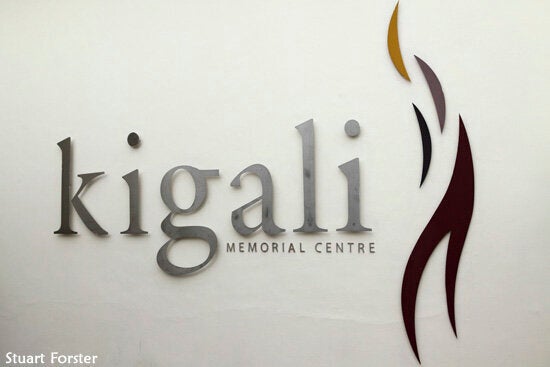We're approaching 19 years since the start of one of the most shocking episodes of recent world history, the Rwandan Genocide.
The Kigali Genocide Memorial Centre opened in 2004, ten years on from the event, and photography plays a significant role in depicting the events and victims of the genocide. The faces of numerous victims are shown in the centre's displays and photos of slain children have heart-rending impact. Without being overly graphic, photography is used to inform and helps personalise and humanise the impact of the killing spree.
In April 1994 reports of systematic mass murder within Rwanda began to circulate around the world. Little, though, was done to halt the killing. To outsiders the genocide was represented as tribal-based ethnic violence, with the Tutsis the victims. Precisely how many people were actually murdered may never be known; estimates vary between 500,000 and over a million. The number of people killed is widely accepted as being somewhere close to 800,000.
That total, whatever it is, is just part of a violent, painful story. Large numbers of women were raped, in some cases by men known to be infected with HIV. Thousands of people were left maimed. Thousands of children were orphaned.

The subject the Kigali Genocide Memorial Centre broaches is clearly emotive. To understand modern Rwanda and how Rwandan people interact with each other today requires knowledge of what happened in that period from April to July 1994.
The centre's displays and audio guide provide information about the tensions preceding the genocide, the events of 1994 and insights to its legacy. Photographs, videos and the stories of people who were there help convey the message. One of the most powerful sections in the centre is called Tomorrow Lost, highlighting the murders of children and providing insights into the personalities of some of the youngsters killed.
The centre deals with the subject matter sensitively and puts the Rwandan genocide into the context of other genocides of the twentieth century.
The goals of the Aegis Trust, the UK based charity that established this memorial in partnership with Kigali's city council, include sharing information about genocides with the aim of preventing further such acts and "the elimination of genocide". The Wasted Lives section of the centre examines other 20th century genocides.
The location of the Kigali Genocide Memorial is significant. The remains of more than a quarter of a million people are buried in the grounds of the Kigali Genocide Memorial Centre. Today concrete covers the mass graves of victims of the 1994 genocide. Some of the victims' names are inscribed into black marble on a wall of remembrance. The memorial's gardens are a place that visitors and survivors can take time to reflect and mourn the loss.

The Genocide Archive of Rwanda is also located at this site. Visitors and scholars can log in at computer stations and read literature relating to the Rwandan Genocide and other episodes of genocide around the globe.
Though the issues raised by the centre are clearly heavy - the genocide wiped out a significant percentage of Rwanda's population, caused millions to flee and traumatised survivors - they are dealt with in a sensitive and informative manner. Seeing and learning about what happened is a first step on a path to understanding a complex topic.
A visit to the Kigali Genocide Memorial should be on the itinerary of every visitor to Rwanda.
Further information
For more information about the Kigali Genocide Memorial, visit the memorial's website.
Further information about the Aegis Trust can be found on the charity's website.
See www.rwandatourism.com for tourism related information about Rwanda.